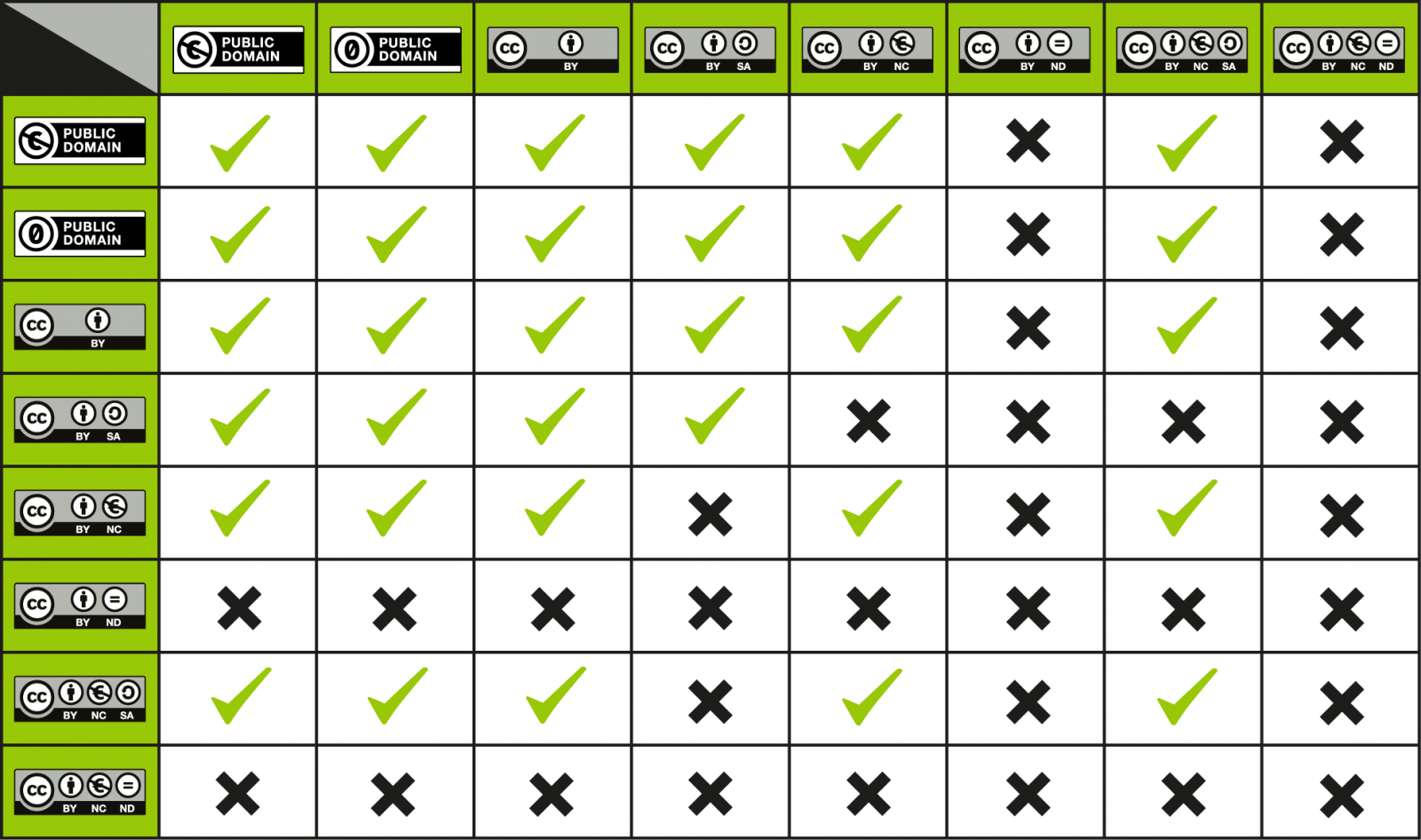Creative Commons is a set of free, public licenses that gives creators a standardized way to grant the public permission to use and share their creative works under copyright law.
The licenses help the public answer the question, "What can I do with this work?"
All Creative Commons licenses ensure that creators retain their copyright and get credit for their work, while permitting others to use and share the works under certain conditions.
In addition to a set of licenses, Creative Commons is also a nonprofit organization, as well as a global network and a movement -- all inspired by people's willingness to share their creativity and knowledge.
"Creative Commons Licensing Explained" by Max Noble
Licenses are comprised of four elements. Each element has details outlining what is and is not permissible regarding how someone can use a work. The four elements combine to make six license options. All Creative Commons licenses ensure that creators retain their copyright and get credit for their work while permitting others to copy and distribute it.
![]()
Attribution
CC BY
This license lets others distribute, remix, tweak, and build upon your work, even commercially, as long as they credit you for the original creation. This is the most accommodating of licenses offered. Recommended for maximum dissemination and use of licensed materials.
![]()
Attribution-ShareAlike
CC BY-SA
This license lets others remix, tweak, and build upon your work even for commercial purposes, as long as they credit you and license their new creations under the identical terms. This license is often compared to “copyleft” free and open source software licenses. All new works based on yours will carry the same license, so any derivatives will also allow commercial use. This is the license used by Wikipedia, and is recommended for materials that would benefit from incorporating content from Wikipedia and similarly licensed projects.
![]()
Attribution-NonCommercial
CC BY-NC
This license lets others remix, tweak, and build upon your work non-commercially, and although their new works must also acknowledge you and be non-commercial, they don’t have to license their derivative works on the same terms.
![]()
Attribution-NonCommercial-ShareAlike
CC BY-NC-SA
This license lets others remix, tweak, and build upon your work non-commercially, as long as they credit you and license their new creations under the identical terms.
![]()
Attribution-NoDerivs
CC BY-ND
This license allows for redistribution, commercial and non-commercial, as long as it is passed along unchanged and in whole, with credit to you.
![]()
Attribution-NonCommercial-NoDerivs
CC BY-NC-ND
This license is the most restrictive of the six main licenses, only allowing others to download your works and share them with others as long as they credit you, but they can’t change them in any way or use them commercially.
Creative Commons is a key aspect of OER because (most) Creative Commons licenses provide free and perpetual permission to engage in what David Wiley’s calls the 5R activities associated with OER: Retain, Reuse, Revise, Remix, and Redistribute.
The chart below helps explain which activities are permitted with which license. Note how works licensed with either CC BY-ND or CC BY-NC-ND are not OER due to their restrictive nature.
This table was adapted from "Wiley’s 5Rs and Creative Commons Licensing" by Krysta McNutt and is licensed under a CC BY 4.0 license.
Individuals can combine material under different Creative Commons licenses, but with some caveats:
See the Creative Commons FAQ, Combining and Adapting CC Material for additional information.

"CC License Compatibility Chart" by Kennisland is licensed under a CC0 1.0 license.
All Creative Commons licenses require that attribution be given to the creator of the content. Proper attribution allows the public to access the original work, identify the original creators, and know what license terms apply to specific content.